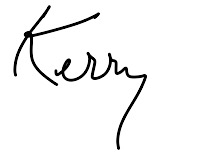Editorial
Years ago, ground-breaking new abstract games were relatively few and far between. I speak here of the period of the original series of Abstract Games, from 2000 to 2003. Back then, the nascent Gipf series, among others, was attracting much attention. Surely there were even fewer new abstract games during the initial run of the old Games & Puzzles magazine from 1972 to 1981, at which time a new game of the quality and originality of Havannah, Entropy, or Epaminondas could create quite a stir throughout the abstract games community, and a simple deduction game like Mastermind could become widely known, even among the general public!
Among the gaming community, abstract games are still very much a minority interest. Nevertheless, the number of new abstract games of quality has increased dramatically during the first part of the current century. Designers such as Néstor Romeral Andrés, Nick Bentley, Cameron Browne, Christian Freeling, Luis Bolaños Mures, Mark Steere, Dieter Stein, and many others are producing new and original games at a breathtaking pace. The problem is not whether or not there is a new game worth playing, but rather which of a hundred new games to try, each of which alone could stand beside designs like Havannah or Epaminondas and hold its own.
I brought this point up with Cameron Browne in the interview with him in AG17, and his opinion was that the increase in choice was necessarily good. I agree in principle, of course, but a challenge with such an extreme variety of great new games is not so much which ones to play, but rather which game deserves the time and energy to investigate properly. I see this in myself—I get excited about a new game, and start thinking about it and playing with it a little, but then something else that is interesting comes along. My attention is pulled away. Any new abstract game stands little chance of generating a large enough community of enthusiastic players to judge its unique qualities properly.
An exceptional few games do attract sufficient attention for proper evaluation. I sometimes play on Little Golem, Boîte à Jeux, or Board Game Arena, and I can testify that the top players of the games on these sites are very, very strong. These sites, and many others, have substantial communities, and the most popular games on them have active groups. However, a very small proportion of new games reach this level of exposure, leaving a great many otherwise excellent games that are hardly played at all. For the sake of comparison, in the middle part of the Twentieth Century, Glinski's Hexagonal Chess achieved significant renown, especially in Eastern Europe, with a large body of players and regular tournaments. I cannot imagine the same happening today, despite all the opportunities on the Internet, and despite all the attention that a few top games receive.
With Abstract Games, we often try to point out, in so many words, "Tarry here for a while, for this is a really good game...." Of course, we can only do this for a very small number of games from the vast selection available. I certainly agree with Cameron that it is wonderful to have the large choice of excellent abstract games, although it is unfortunate that many very interesting games are not adequately investigated.
The current issue, as you will see, has somewhat of a focus on the chess variants. With the articles on Shatranj, Super Chess, 3D XYZ Chess, and Jetan, respectively, we cover chess variants ancient, modern, hypermodern, and fantastical! All these games, I think, are worth a closer look. Of course, there are thousands of chess variants, and the chess variants particularly suffer from the syndrome of a very great many of them that nobody plays. Any selection from among the chess variants is to an extent arbitrary, but I hope the few here may catch your attention for a while--as they did for me. By the way, the solution to the Chu Shogi puzzle from AG18 will be given in the next issue, so you still have a chance to solve it and win the complimentary print magazine.
I would like to note that we were very sad to hear of the passing of Dr. Eric Solomon. His game Entropy (AG11), among many others, will live forever. I suspect his game Ley Lines, presented in AG17, was his last published game. John Horton Conway also passed away recently. Dr. Conway was primarily a mathematician, although Winning Ways for Your Mathematical Plays (by Conway and his co-authors, Elwyn Berlekamp, and Richard Guy) is a classic in the literature of combinatorial games. Moreover, Dr. Conway designed many games of significant interest, among which we previously covered Phutball (AG3), Snort (AG15), and Sprouts (AG16). Both Eric Solomon and John Conway were princes among the game designers, and their work will never be forgotten.
Stay safe! Happy gaming!
Among the gaming community, abstract games are still very much a minority interest. Nevertheless, the number of new abstract games of quality has increased dramatically during the first part of the current century. Designers such as Néstor Romeral Andrés, Nick Bentley, Cameron Browne, Christian Freeling, Luis Bolaños Mures, Mark Steere, Dieter Stein, and many others are producing new and original games at a breathtaking pace. The problem is not whether or not there is a new game worth playing, but rather which of a hundred new games to try, each of which alone could stand beside designs like Havannah or Epaminondas and hold its own.
I brought this point up with Cameron Browne in the interview with him in AG17, and his opinion was that the increase in choice was necessarily good. I agree in principle, of course, but a challenge with such an extreme variety of great new games is not so much which ones to play, but rather which game deserves the time and energy to investigate properly. I see this in myself—I get excited about a new game, and start thinking about it and playing with it a little, but then something else that is interesting comes along. My attention is pulled away. Any new abstract game stands little chance of generating a large enough community of enthusiastic players to judge its unique qualities properly.
An exceptional few games do attract sufficient attention for proper evaluation. I sometimes play on Little Golem, Boîte à Jeux, or Board Game Arena, and I can testify that the top players of the games on these sites are very, very strong. These sites, and many others, have substantial communities, and the most popular games on them have active groups. However, a very small proportion of new games reach this level of exposure, leaving a great many otherwise excellent games that are hardly played at all. For the sake of comparison, in the middle part of the Twentieth Century, Glinski's Hexagonal Chess achieved significant renown, especially in Eastern Europe, with a large body of players and regular tournaments. I cannot imagine the same happening today, despite all the opportunities on the Internet, and despite all the attention that a few top games receive.
With Abstract Games, we often try to point out, in so many words, "Tarry here for a while, for this is a really good game...." Of course, we can only do this for a very small number of games from the vast selection available. I certainly agree with Cameron that it is wonderful to have the large choice of excellent abstract games, although it is unfortunate that many very interesting games are not adequately investigated.
The current issue, as you will see, has somewhat of a focus on the chess variants. With the articles on Shatranj, Super Chess, 3D XYZ Chess, and Jetan, respectively, we cover chess variants ancient, modern, hypermodern, and fantastical! All these games, I think, are worth a closer look. Of course, there are thousands of chess variants, and the chess variants particularly suffer from the syndrome of a very great many of them that nobody plays. Any selection from among the chess variants is to an extent arbitrary, but I hope the few here may catch your attention for a while--as they did for me. By the way, the solution to the Chu Shogi puzzle from AG18 will be given in the next issue, so you still have a chance to solve it and win the complimentary print magazine.
I would like to note that we were very sad to hear of the passing of Dr. Eric Solomon. His game Entropy (AG11), among many others, will live forever. I suspect his game Ley Lines, presented in AG17, was his last published game. John Horton Conway also passed away recently. Dr. Conway was primarily a mathematician, although Winning Ways for Your Mathematical Plays (by Conway and his co-authors, Elwyn Berlekamp, and Richard Guy) is a classic in the literature of combinatorial games. Moreover, Dr. Conway designed many games of significant interest, among which we previously covered Phutball (AG3), Snort (AG15), and Sprouts (AG16). Both Eric Solomon and John Conway were princes among the game designers, and their work will never be forgotten.
Stay safe! Happy gaming!

